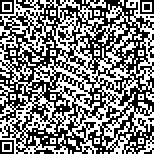陆廷仁,张少军.对截肢患者肌电假手的功能训练和评定的临床研究[J].中华物理医学与康复杂志,2003,(3):.-
扫码阅读全文

|
| 对截肢患者肌电假手的功能训练和评定的临床研究 |
|
| |
| DOI: |
| 中文关键词: 肌电假手 生物反馈 ADL功能 |
| 英文关键词: Myoelectric artificial hand Feedback training ADL function |
| 基金项目: |
|
| 摘要点击次数: 2304 |
| 全文下载次数: 2059 |
| 中文摘要: |
| 目的探讨截肢患者肌电假手生物反馈训练的最佳方法及其效果评定。 方法14例上肢截肢者,共16只肌电假手;男11例,女3例;年龄(25±8.69)岁;右侧截肢11例,左侧截肢1例,双侧截肢2例。肌电假手生物反馈训练分为:基础电信号训练、视觉反馈训练和日常生活能力训练。训练时间为4~6周。 结果16只肌电假手均能按照截肢者的意愿实现开手/闭手及旋腕动作,完成穿衣、洗漱、进餐、写字等日常功能。 结论欲使肌电假手达到预期设定的目标,其训练有2个关键:一是寻找残肢肌肉的最强肌电信号;二是不断强化生物反馈过程,使视觉和肌电假手的动作协调自如。 |
| 英文摘要: |
| Objective To study the best method for myoelectric feedback training and evaluate the effectiveness of myoelectric artificial hand. MethodsFourteen cases of upper limb amputees (11 male, 3 female, aged 25±8.69 years, right side 13, left side 3,totally 16 myoelectric artificial hands) were recruited for this study. The biofeedback training process was divided into three steps: basic signal of myoelectric feedback training, visible feedback training, and ADL function training. ResultsAfter the training, 16 myoelectric artificial hands could grasp, pinch and rotate wrist, and could perform ADL such as dressing, eating, cleaning. ConclusionTo achieve the goal set for the myoelectric artificial hand, emphasis should be on locating the most stronger myoelectric signal of the stump and strengthening the feedback training. |
|
查看全文
查看/发表评论 下载PDF阅读器 |
| 关闭 |
|
|
|